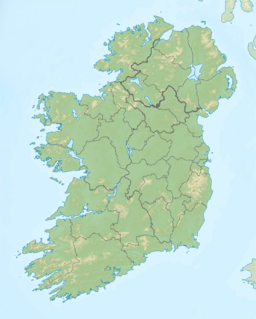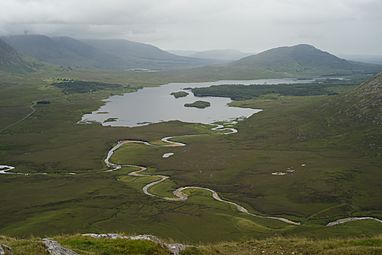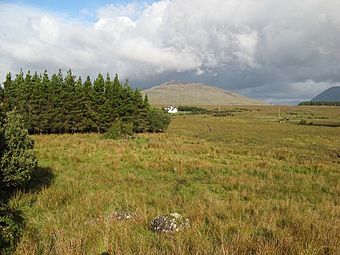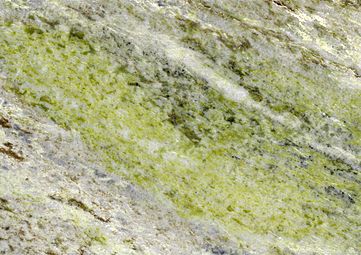Lissoughter facts for kids
Quick facts for kids Lissoughter |
|
|---|---|
| Cnoc Lios Uachtair | |
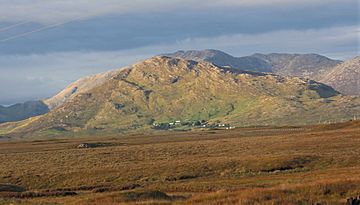
Lissoughter from the southwest; the tallest peak behind it is Binn idir an da Log
|
|
| Highest point | |
| Elevation | 401 m (1,316 ft) |
| Prominence | 336 m (1,102 ft) |
| Listing | Marilyn |
| Naming | |
| English translation | hill of the upper ring-fort |
| Language of name | Irish |
| Geography | |
| Location | Recess, County Galway, Republic of Ireland |
| Parent range | Twelve Bens-Maumturks |
| OSI/OSNI grid | L8596849524 |
| Topo map | OSi Discovery 44 |
| Geology | |
| Type of rock | Pale quartzites, grits, graphitic top bedrock |
Lissoughter (Irish: Cnoc Lios Uachtair, meaning hill of the upper ring-fort) at 401 metres (1,316 ft), does not qualify to be an Arderin or a Vandeleur-Lynam, however, its prominence of 336 metres (1,102 ft) ranks it as a Marilyn. Lissoughter is an isolated peak, situated between the Twelve Bens and Maumturks mountain ranges, at the southern entrance to the Inagh Valley, in the Connemara National Park, in Recess, County Galway, Ireland.
A quarry on Lissoughter's southern slopes (the Lissoughter-Derryclare quarry, named after the peak and the neighbouring Derryclare mountain), is a noted source of the green-coloured Connemara marble (sometimes called Connemara Lissoughter Marble). As an isolated standalone peak, it is less frequented by hill-walkers, however, it is regarded for its views of the two ranges and the southern boglands of Connemara.
Gallery
-
Lough Inagh and Lissoughter (back, right), viewed from Knockpasheemore


